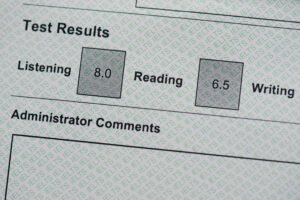Aug
07
2024
Trying to sort through all of the information higher education IT teams are monitoring is a losing battle. Observability helps it all make sense.
For colleges and universities to keep technology running smoothly and securely, IT teams need to know what’s going on. Systems monitoring generates that information, while observability puts it to use.
“The largest data stores that we manage are security monitoring logs, and there’s a lot of noise in that data. Observability lets you pull the signal out of the noise,” says University of California, San Diego CIO Vince Kellen.
For higher education, it’s important to understand how monitoring and observability work together to deliver full operational readiness and robust security.
Click the banner to learn how to navigate your next network modernization project.
What’s the Difference Between Observability and Monitoring?
Observability and monitoring are two sides of the same coin.
“Observability is a modern approach to monitoring that provides complete visibility across the full stack of network, infrastructure, applications and digital customer experience,” says Mary Lou Prevost, group vice president for state, local and higher education at Splunk.
In today’s complex IT environments, “traditional monitoring just doesn’t cut it anymore. Most monitoring tools weren’t built to handle the frequency of changes or the explosion of potential failure scenarios found with modern, cloud-native software,” she says.
Observability helps makes sense of the situation. “Monitoring tools get you a base level, and the observability adds the context that drives the needed action,” Kellen says.
RELATED: Modernize higher ed network infrastructure with a next-generation network assessment.
Why Observability Is the Right Next Step for Higher Education
Once the networks are well monitored, observability represents an important next step.
“If I have 250,000 devices on my network and they’re just MAC addresses and IP addresses, I’ve got monitoring, but I don’t necessarily know what I’m looking at,” Kellen says.
Observability tells you what’s actually going on.
“There’s this IP address going crazy. What is it? Oh, it’s the server in our engineering department or a server within an area of the cloud owned by this person,” Kellen adds. “Now, we have context for action.”
Beyond keeping systems humming along, institutions need observability to meet student expectations in an increasingly competitive higher education environment, says Gregg Ostrowski, executive CTO at Cisco AppDynamics.
“Today, everything is done online and electronically,” he says. Students register for courses and access academic materials online. They log in to access to a range of university services. “All of that has to be flawless.”
Mary Lou Prevost
Group VP State, Local and Higher Education, Splunk
The tools of observability, generally known as application performance monitoring tools, help deliver that seamless experience. With these tools, IT “can follow and watch the entire flow,” Ostrowski says. “They can gather metrics: How is the user experience performing? All of that will help ensure students access to the right resources through these digital services.”
Prevost describes effective observability as a potential game changer for any university.
“Since many students now are virtual and take their classes online, it’s even more important to make sure all of the various digital components of the university are visible in one place. And the performance and reliability of those digital programs can be critical to attracting and retaining students,” she says. “That’s where observability comes into play.”
Observability “offers a richer, more comprehensive understanding of system behaviors and interactions, providing enhanced visibility across applications, databases, services and more,” she says.
This approach “helps to enable faster, more accurate troubleshooting and root cause analysis, empowering IT operations and engineering teams to make smarter, data-driven decisions,” Prevost says. That means “that educational work can go on reliably, no matter what external factors are at play.”
LEARN MORE: See how modernizing legacy applications accelerates digital velocity.
Best Practices for Bringing Observability to Life
A number of best practices can help schools to deliver on the promise of observability. Step one is to get hold of the right tools.
“An application performance monitoring solution is really the foundation of observability,” Ostrowski says. Such a solution “gives you that understanding of where all of the application dependencies are. It lets you look at the end-user experience and presents all of that in a dashboard style.”
On top of this, IT teams can layer on additional networking visibility capabilities, as well as additional components to enhance security visibility. “You start to pull in data sets coming in from all of your platforms into one centralized view,” he says. “That makes it very seamless for a technology team to collaborate.”
Gregg Ostrowski
Executive CTO, Cisco AppDynamics
Overall, schools need to seek out “observability tools that can process, analyze and route data — metrics, events, logs and traces — across any IT environment,” Prevost says.
That end-to-end visibility “empowers ITOps, engineering and security teams with shared data, context and workflows to see where a problem originated and its impact,” she says. To get there, “higher ed organizations should seek out observability solutions that make it easy to search and analyze unstructured data, and then turn that data into insights to take action on.”
Ideally, the right observability platform will provide “real-time detection and guided root-cause analysis that tells your teams where to look when investigating a problem, why the problem occurred, its impact on your business and how to fix it,” Prevost says.
With the right tools in place, leadership then can focus on process questions to make best use of those capabilities. Once IT teams have access to unified visibility, “it’s important that they’re empowered to detect and investigate business-impacting issues more quickly,” she says.
To make that pivot effectively, to go from monitoring to true observability, “you need to have that high-level vision and strategy,” Ostrowski says.
“This is not only a technology issue, It’s a people and process change. You’re changing the way you align your resources,” he says. If various components of the IT team have been siloed in the past, “you want to bring them together now, get them all in alignment.”
It makes sense to have non-technical stakeholders at the table as well.
“How long did it take folks to go through the registration process? How many folks were able to pay their tuition?” Ostrowski says. A range of university functions stand to benefit from observability, and the owners of those functions should be part of the process of bringing observability to life. “They are all stakeholders in that overarching strategy,” he says.
Laurence Dutton/Getty Images
Original Post: Read More
Source: EdTech Magazine: Higher Ed



